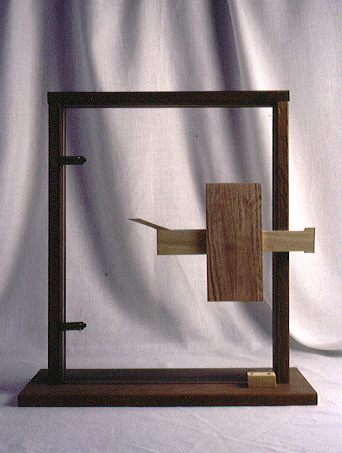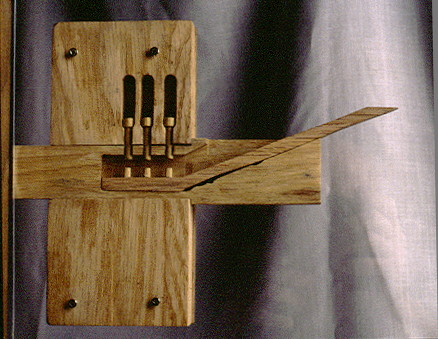1793 Cotton gin
- The cotton gin is a machine that separates cotton fibers from seedpods and sometimes sticky seeds, a job previously done by hand. These seeds are either used again to grow more cotton or, if badly damaged, disposed. The cotton gin uses a combination of a wire screen and small wire hooks to pull the cotton through the screen, while brushes continuously remove the loose cotton lint to prevent jams. In 1793, Eli Whitney invented the cotton gin and later received a patent on March 14, 1794. Whitney's cotton gin could have possibly ignited a revolution in the cotton industry and the rise of "King Cotton" as the main cash crop in the South. However, it never made him rich. Instead of buying his machine, farmers built inferior versions of their own which led to the increasing need for African-American slave labor.




 This simple tumbler lock was probably invented around 1000 BCE, although a date of 2000 BCE has also been proposed. Many sources believe this lock was invented in Egypt, though locks of this type have been found in ruins in Iraq that predate those found in Egypt. After its invention and its movement into Egypt, the lock made its way into Greece. Here this new system was a great improvement over the previous locks, which were simply a board drawn across a door. From Greece the lock moved into Europe.
This simple tumbler lock was probably invented around 1000 BCE, although a date of 2000 BCE has also been proposed. Many sources believe this lock was invented in Egypt, though locks of this type have been found in ruins in Iraq that predate those found in Egypt. After its invention and its movement into Egypt, the lock made its way into Greece. Here this new system was a great improvement over the previous locks, which were simply a board drawn across a door. From Greece the lock moved into Europe.  The lock is the first mechanical fastening for doors, and is said to be the only major European architectural improvement in classical times.The mechanism consists of a key and a lock. The key is simply a bit of wood with small pins, usually of brass. These pins enter small holes in the bolt and lift similar pins in the lock. The pins of the key push the lock pins out of the holes, and the bolt can be moved aside and the door opened. When leaving the building, the bolt is slid across the door jamb, and the pins fall into the grooves in the bolt. To unlock, the key is slid into the opening in the bolt and lifted up, which moves the bolt-pins out of the way.
The lock is the first mechanical fastening for doors, and is said to be the only major European architectural improvement in classical times.The mechanism consists of a key and a lock. The key is simply a bit of wood with small pins, usually of brass. These pins enter small holes in the bolt and lift similar pins in the lock. The pins of the key push the lock pins out of the holes, and the bolt can be moved aside and the door opened. When leaving the building, the bolt is slid across the door jamb, and the pins fall into the grooves in the bolt. To unlock, the key is slid into the opening in the bolt and lifted up, which moves the bolt-pins out of the way.